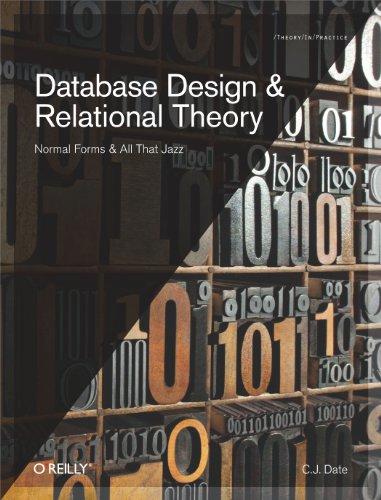Question
Please complete it in matlab... function [rmsvars lowndx rmstrain rmstest] = a_ % [RMSVARS LOWNDX RMSTRAIN RMSTEST]=A3 finds the RMS errors of % linear regression
Please complete it in matlab...
function [rmsvars lowndx rmstrain rmstest] = a_
% [RMSVARS LOWNDX RMSTRAIN RMSTEST]=A3 finds the RMS errors of
% linear regression of the data in the file "GOODS.CSV" by treating
% each column as a vector of dependent observations, using the other
% columns of the data as observations of independent varaibles. The
% individual RMS errors are returned in RMSVARS and the index of the
% smallest RMS error is returned in LOWNDX. For the variable that is
% best explained by the other variables, a 5-fold cross validation is
% computed. The RMS errors for the training of each fold are returned
% in RMSTEST and the RMS errors for the testing of each fold are
% returned in RMSTEST.
%
% INPUTS:
% none
% OUTPUTS:
% RMSVARS - 1xN array of RMS errors of linear regression
% LOWNDX - integer scalar, index into RMSVALS
% RMSTRAIN - 1x5 array of RMS errors for 5-fold training
% RMSTEST - 1x5 array of RMS errors for 5-fold testing
filename = 'xxx.csv';
[rmsvars lowndx] = a1(filename);
[rmstrain rmstest] = a2(filename, lowndx)
end
function [rmsvars lowndx] = a1(filename)
% [RMSVARS LOWNDX]=A1(FILENAME) finds the RMS errors of
% linear regression of the data in the file FILENAME by treating
% each column as a vector of dependent observations, using the other
% columns of the data as observations of independent varaibles. The
% individual RMS errors are returned in RMSVARS and the index of the
% smallest RMS error is returned in LOWNDX.
%
% INPUTS:
% FILENAME - character string, name of file to be processed;
% assume that the first row describes the data variables
% OUTPUTS:
% RMSVARS - 1xN array of RMS errors of linear regression
% LOWNDX - integer scalar, index into RMSVALS
% Read the test data from a CSV file; find the size of the data
% %
% % STUDENT CODE GOES HERE: REMOVE THIS COMMENT
% % THEN READ THE FILE SPECIFIED BY THE INPUT ARGUMENT
% %
% Compute the RMS errors for linear regression
% %
% % STUDENT CODE GOES HERE: REMOVE THE NEXT 2 LINES AND THIS COMMENT
% % THEN PERFORM THE COMPUTATIONS
rmsvars = 0.1*(1:16);
lowndx = 1;
% Find the regression on your choice of standardized
% or unstandardized variables
% %
% % STUDENT CODE GOES HERE: REMOVE THIS COMMENT
% % THEN PERFORM THE COMPUTATIONS
% %
% Plot the results
% %
% % STUDENT CODE GOES HERE: REMOVE THIS COMMENT
% % THEN PLOT THE RESULTS
% %
end
function [rmstrain rmstest] = a2(filename,lowndx)
% [RMSTRAIN RMSTEST]=A2(LOWNDX) finds the RMS errors of 5-fold
% cross-validation for the variable LOWNDX of the data in the file
% FILENAME. The RMS errors for the training of each fold are returned
% in RMSTEST and the RMS errors for the testing of each fold are
% returned in RMSTEST.
%
% INPUTS:
% FILENAME - character string, name of file to be processed;
% assume that the first row describes the data variables
% LOWNDX - integer scalar, index into the data
% OUTPUTS:
% RMSTRAIN - 1x5 array of RMS errors for 5-fold training
% RMSTEST - 1x5 array of RMS errors for 5-fold testing
% Read the test data from a CSV file; find the size of the data
% %
% % STUDENT CODE GOES HERE: REMOVE THIS COMMENT
% % THEN READ THE FILE SPECIFIED BY THE INPUT ARGUMENT
% %
% Create Xmat and yvec from the data and the input parameter,
% accounting for no standardization of data
% %
% % STUDENT CODE GOES HERE: REMOVE THIS COMMENT
% % THEN ASSIGN THE VARIABLES FROM THE DATASET
% %
% Compute the RMS errors of 5-fold cross-validation
% %
% % STUDENT CODE GOES HERE: REMOVE THE NEXT 2 LINES AND THIS COMMENT
% % THEN PERFORM THE COMPUTATIONS
% %
rmstrain = 0.5*ones(1,5);
rmstest = 0.6*ones(1,5);
end
function [rmstrain,rmstest]=mykfold(Xmat, yvec, k_in)
% [RMSTRAIN,RMSTEST]=MYKFOLD(XMAT,yvec,K) performs a k-fold validation
% of the least-squares linear fit of yvec to XMAT. If K is omitted,
% the default is 5.
%
% INPUTS:
% XMAT - MxN data vector
% yvec - Mx1 data vector
% K - positive integer, number of folds to use
% OUTPUTS:
% RMSTRAIN - 1xK vector of RMS error of the training fits
% RMSTEST - 1xK vector of RMS error of the testing fits
% Problem size
M = size(Xmat, 1);
% Set the number of folds; must be 1 if nargin >= 3 & ~isempty(k_in) k = max(min(round(k_in), M-1), 2); else k = 5; end % Initialize the return variables rmstrain = zeros(1, k); rmstest = zeros(1, k); % Process each fold for ix=1:k % % % % STUDENT CODE GOES HERE: replace the next 5 lines with code to % % (1) set up the "train" and "test" indexing for "xmat" and "yvec" % % (2) use the indexing to set up the "train" and "test" data % % (3) compute "wvec" for the training data % % xmat_train = [0 1]; yvec_train = 0; wvec = [0 0]; xmat_test = [0 1]; yvec_test = 0; rmstrain(ix) = rms(xmat_train*wvec - yvec_train); rmstest(ix) = rms(xmat_test*wvec - yvec_test); end end
Step by Step Solution
There are 3 Steps involved in it
Step: 1

Get Instant Access to Expert-Tailored Solutions
See step-by-step solutions with expert insights and AI powered tools for academic success
Step: 2

Step: 3

Ace Your Homework with AI
Get the answers you need in no time with our AI-driven, step-by-step assistance
Get Started


